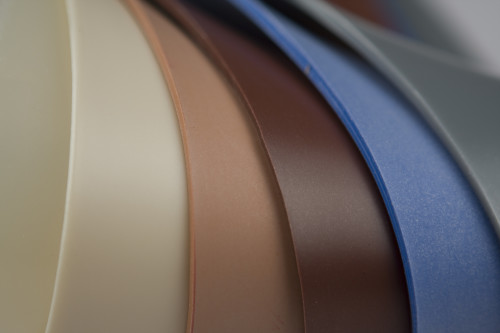Tech|Tips – 3DL: Recycling Used Membrane Material
Previously we discussed how a very risky use of scrap membrane material lead to an unusual defect and very high scrap rate for one 3DL component producer. That got me wondering how other companies are using their silicone or natural rubber membrane material once it is no longer suitable for use in a membrane press.
The performance characteristics that are required for 3D Lamination are very advanced. Commodity silicone and natural rubber sheeting would never do the job. Over time even high-grade membrane material will lose its elongation, tear strength, tensile strength, and heat resistance – all critical characteristics required for use in a membrane press. However, that doesn’t mean the material is not suitable for other applications where commodity level products are typically used.
Membranes are usually about 65” wide and 120” long, and sometimes much larger. Depending on production requirements, companies may replace a membrane annually, monthly, or far more often. That’s a lot of material that could be put to use, so we put the word out. Here are some of the ideas we’ve uncovered.*
Down-sized Membranes
Many companies have multiple presses of various sizes or even have a test press. When membranes tear prematurely due to operator error, sometimes they can be cut down to a size suitable for another machine.
Floor Mats
Don’t want to kneel or lie down on a gritty or oily floor? Use your old membranes as a floor mat.
Gasket Material
Silicone and natural rubber sheet can be used as gaskets in many applications. Some companies have used old membrane material as gaskets to protect new membrane material by shielding it from abrasive metal frames.
Membrane Patches
Some use old membrane material to patch newer membranes. However,
we recommend the use of thinner silicone material in order to minimize damage to the product being pressed in the patched area. Smartech offers both the thinner patch material as well as the same RTV (room temperature vulcanized) silicone adhesive that Steinbach uses to splice very wide membranes.
Pallet Pads
Cut the membranes to the size of a pallet and stack product on top.
Stacking/Packing
Small squares of material can be placed between stacked parts to keep them from sliding and scratching. These can be parts ready for shipment, being transported around the plant, or parts that have been glued in automatic glue application equipment that are dry enough to handle but need some separation when stacking.
Trimming/Cleaning Table Pads
Replaces carpeting, which can allow gritty material to get lodged into the fibers and scratch parts as they are being trimmed or cleaned.
*All uses of scrap membrane material require thoroughly cleaning the material once it is removed from your press. We recommend cleaning with denatured alcohol or similar cleaner.
Given that silicone and natural rubber are both thermoset rather than thermoplastic materials, the options for turning this material over to a recycling operation are virtually non-existent.
So that’s what we have so far. As we uncover more we’ll let you know.
Bill Formella is President of Formella Contour Solutions and is the owner and moderator of the LinkedIn group Membrane Pressing & 3D Laminating Design. You can reach Bill at bformella@formellacsi.com. For more tips and ideas, follow us on Facebook and Twitter.

Looking for More Information?
Check out our Resources or Contact Us

